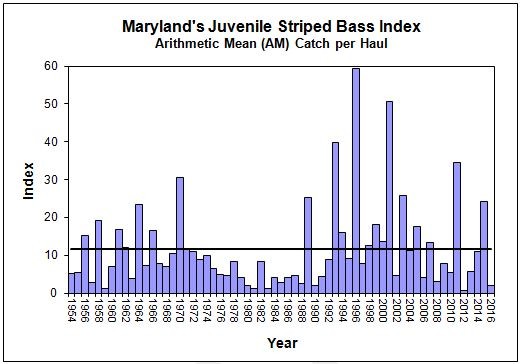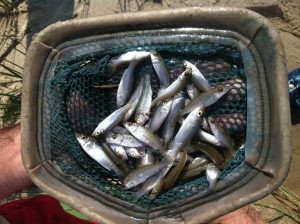Report urges modernization in Federal fisheries management
Last week the Center for Coastal Conservation, along with their ten recreational fishing and boating industry partners, released A Vision for Marine Fisheries Management in the 21st Century: Priorities for a New Administration.
The Vision highlights top recommendations of the marine recreational fishing community for the incoming Administration and a continuation of their work with the next Congress. The report seeks to more effectively manage the marine recreational fishing sector — to improve the public’s access to public resources, to create jobs, and to enhance conservation of fish stocks.
The report’s introduction states, “Marine recreational fishing is increasingly becoming a major driver of the nation’s outdoor economy through everything from retail sales to licensing fees. In fact, the National Marine Fisheries Service (NMFS) now estimates that the growing recreational saltwater fishing industry contributes more than $70 billion annually in economic activity.”
In spite of this $70 billion dollar annual impact to our economy the report says, “Antiquated federal policies threaten to stem this positive economic trend. At the heart of our (Vision) recommendations is a shift away from a continued approach to federal fisheries management that uses commercial fishing tools to manage recreational fishing.”
The Vision study goes on to say that, “the economic impact of recreational fishing is greater than the commercial industry in terms of number of jobs provided and total economic impact. Yet, recreational anglers are allowed only a fraction of overall landings.”
In 2014 a study was done by the recreational boating and fishing industries that addressed the historic lack of focus on recreational fishing within the federal marine fisheries management system. The study was spearheaded by Bass Pro Shops Founder and CEO Johnny Morris and Maverick Boats President Scott Deal chairing the Commission on Saltwater Recreational Fisheries Management, which produced its landmark 2014 report, “A Vision for Managing America’s Saltwater Recreational Fisheries.”
The report makes a strong case “for NOAA, or Congress in a new Magnuson-Stevens Act, to finally review allocations of fish stocks between commercial interests and recreational anglers. In doing so, NOAA needs to maximize benefits to the nation by developing a cooperative management system.”
Many recreational anglers believe that recreational fishing is a sustainable activity that helps boost tourism and local economies, and I praise the ‘Vision’ report for advocating for recreational fishing trying to get NOAA (and the Country) to think of it on equal footing with commercial fishing.
However, the Vision report also supports state control of fisheries in what in now federal waters which many conservation groups have opposed. Many believe the Vision report falls short in not seeing the benefits of the Magnuson-Stevens Act. That 40 fish stocks have been rebuilt under the MSA, species that were overfished with little hope of survival until NOAA, its National Marine Fisheries Service and the regional councils began to rebuild fish stocks. When the responsibility to rebuild fish stocks was in the hands of the states, the self-interests of the states took over and fish took a back seat and consequently fish stocks were in trouble.
Yes, there is more work to be done with rebuilding; however, history has shown that handing control of fisheries management to states in Federal waters has not worked. The Vision report advocates for the Gulf States to take control of red snapper fishing as it is important to the states hospitality and recreational fishing communities and they believe it is a matter of state’s rights to control the red snapper fishery. However, conservationists believe that when special interests of the states take over… the health of the fish (red snapper) will take a back seat.
Visit coastalconservation.us for the full ‘Vision’ report.
Striped bass reproduction below average
Striped bass from the Chesapeake Bay area migrate north along the coastal shore to Rhode Island and as far north as Maine in the spring and then migrate back south to the Chesapeake area in the fall. Some of our striped bass come from the Hudson River to spawn.
So when the Maryland Department of Natural Resources announced last week that the 2016 annual Juvenile Striped Bass Survey index was 2.2, well below the 63-year index average of 11.7, it got the attention of fishermen coast-wide. The good news was that the survey found one-year-old striped bass from last year’s very successful year-class in abundance.
“While this year’s striped bass index is disappointing, it is not a concern unless we observe poor spawning in multiple, consecutive years,” said Fishing and Boating Services Director David Blazer. “Very successful spawning years, as recently as 2011 and 2015, should more than compensate for this below-average year-class.”
Survey results indicate that most anadromous species — fish that return to freshwater to spawn — experienced similarly low reproduction in 2016, potentially indicating that environmental factors such as dry weather and low river flows during the spring season may have contributed to the poor results. Intensive spring surveys found normal numbers of striped bass females on the spawning grounds however sensitive egg and larval stages often don’t survive adverse conditions.
Where’s the bite
Striped bass and bluefish. “Bluefish are all over the bay, you just have to be there when they pop up. The striped bass bite is strong at night in the Warren River on the changing tide with anglers using eels. One customer caught a 21 pound fish there and a number of them in the high teens,” said John Littlefield of Archie’s Bait & Tackle, Riverside. Alex Petti of Finn & Feather Outfitters, North Kingstown said, “Narrow River is the hot spot for fly fishermen now. They are catching shad and striped bass with large fish being landed at the mouth of the river. The shad seem to be going for an all-white fly or white with just a bit of color on top.” Manny Macedo of Lucky Bait & Tackle, Warren said, “School bass are being caught in the Bay with few reports of larger fish being taken.”
“Tautog fishing is very good with customers limiting out at Conimicut Light with tautog to 22". It was a 10 or 12 fish to one keeper ratio before, but now it’s more like 6 or 7 shorts to one keeper radio. The improved conditions along with an increase to six fish/person/day (10 fish boat limit) has got a lot of people out there fishing for tautog,” said Littlefield. Macedo said, “Tautog fishing is good everywhere… Providence, Tiverton, Newport to name a few...crabs were our number one selling bait for the past week.”
False Albacore fishing had slowed but is now picking up a bit. Alex Petti of Finn & Feathers said, “We have some customers fishing from a boat and are nailing the false albacore between the West Wall of the Harbor of Refuge and Deep Hole.”
Captain Dave Monti has been fishing and shellfishing for over 40 years. He holds a captain’s master license and a charter fishing license. He is a RISAA board member, a member of the RI Party & Charter Boat Association and a member of the RI Marine Fisheries Council. Contact or forward fishing news and photos to Capt. Dave at dmontifish@verizon.net or visit his website at noflukefishing.com.









